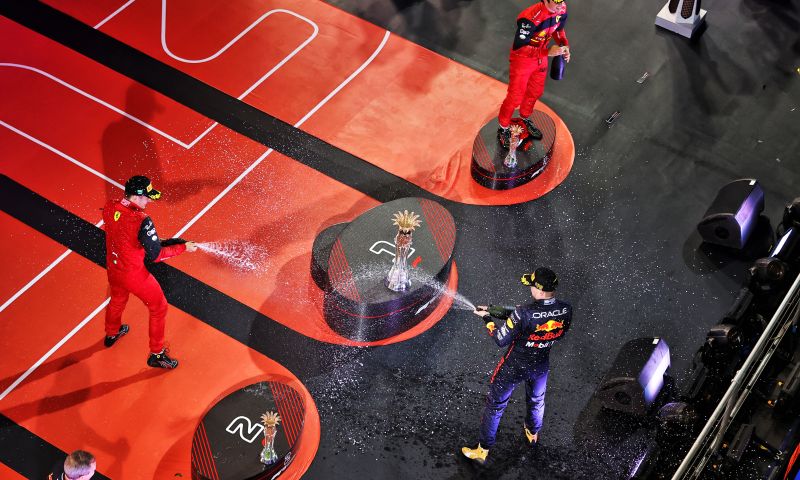F1 News

Conclusions GP Saudi Arabia: Good and bad news after mixed feelings
- GPblog.com
The Saudi Arabia Grand Prix was an intense race with a blood-curdling denouement of a weekend that started very turbulent. The conclusions we can draw after the mixed feelings during the race weekend in Jeddah therefore go both ways.
Intense race with bloodcurdling denouement
Starting with the good news, as 2022 promises to be another exciting season. With the battles of the past two Grands Prix between Max Verstappen and Charles Leclerc, it seems that a new rivalry has immediately emerged in Formula 1. Last year we were treated to the battle between Verstappen and Lewis Hamilton who appeared to have similar racing skills and were driving almost equally fast cars. In both Bahrain and Saudi Arabia, Verstappen and Leclerc showed they had the ingredients to set up the same rivalry this year as in 2021.
A big advantage of 2022 is the conclusion that following another F1 car seems a lot easier. In Bahrain we already saw a fight between Leclerc and Verstappen that lasted longer than one lap. F1 fans were already extremely satisfied with that, but in Jeddah we were even treated to a fight at the head of the field that lasted for almost half the race. The fact that following seems easier on the track is not just down to Verstappen's skill. The fight between Alpine drivers Fernando Alonso and Esteban Ocon also showed that the cars could keep fighting with each other for several laps. Even with the four of them, with Valtteri Bottas and Kevin Magnussen included, there could be several laps of pushing and pulling.
Unsafe situations in Jeddah
The other side of the weekend was the dangerous situation in Jeddah. For two reasons, the race at the Jeddah Corniche Circuit was a controversial event. First, because the track has a very dangerous and intense layout, which can lead to horrific crashes. Secondly, but certainly no less in terms of safety, there was the looming situation following the missile attacks on the Aramco facilities less than twenty kilometers away from the circuit.
First, the safety of the circuit. On Friday, no fewer than five red flags fell during the sessions run there by the F2 drivers. The F2 drivers are a bit less experienced than the F1 drivers, but still, five red flags in a 75 minute timeframe is too much. Especially since the red flags were not waved lightly. We saw substantial crashes. Although there weren't many serious misses at the beginning of the weekend in F1, it was quite different during qualifying. Mick Schumacher crashed out hard, just as he crashed out in the race last year. The drivers were already asking for major changes to the circuit at the end of last year. Those adjustments did come, but turned out to be only of a very small scale.
Finally, the threatening situation in Jeddah around the rocket attacks. The FIA and F1 organization decided to allow the race to go ahead after a missile attack took place near the circuit during FP1 of Formula 1. In doing so, the organization left the choice to the teams and drivers themselves to participate in the Grand Prix. The teams were able to decide fairly quickly, but the drivers did meet for four hours before deciding to race. The sentiment among F1 fans at this decision was that the drivers were more or less pressured to race anyway.
Drivers have not been heard
Looking back on the weekend, it ended up being safe in this area, but that can never be guaranteed in advance in such a situation. The drivers seemed to have serious objections to continuing the race weekend, yet they were put in a position where they had almost no choice but to race. The fact that the FIA does not take responsibility over these individuals and those without an audible voice, such as the mechanics, is distressing. Combined with the modifications to the circuit that proved inadequate, perhaps it must also be concluded that the drivers, although welcomed as heroes by the sport, are not treated as the heroes they are.

